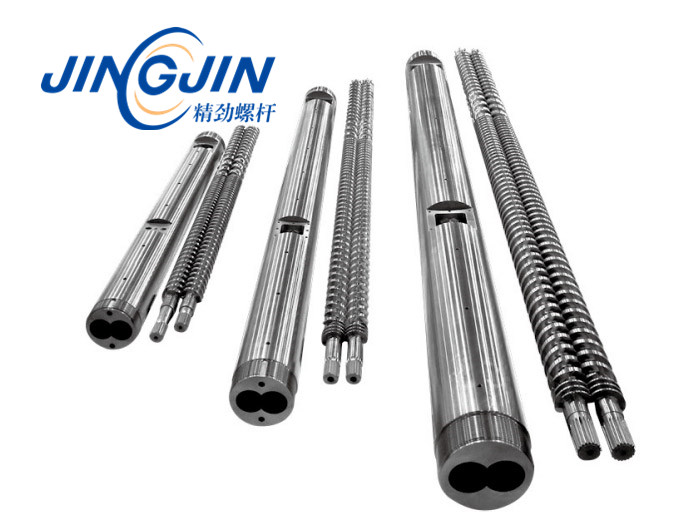How to choose the material of the screw barrel and how […]
How to choose the material of the screw barrel and how to treat the surface?
Due to the economic efficiency of nitrided steel screws, many countries still use them. For example, the most commonly used in West Germany is nitrided steel 8550 (34CrAlNi7) and 8519 (31CrMoV9), and the others still have 7707 (30CrMoV9), 4122 (X35CrMo17) and 4057 ( X32CrNi17) and so on. Most of them are medium carbon steels with carbon content of 0.30-0.40%, and they also contain alloying elements such as Si, Mn, Cr, Ni, Mo, V, and Al. About 80% of the screws in the United States use SAE4140 (42CrMo4) steel and flame-hardened steel, and the remaining 20% use chlorinated steel and spray alloy materials on medium carbon steel. Most of the small and medium-sized screws in Japan use nitrided steel SCM2-4, while the large-scale screws are surface quenched with medium carbon steel S45C.

The vast majority of screws in our country use nitrided steel 38CrMoAlA. Some production plants also use 40Cr or 45 steel.
The strength limit of nitrided steel is about 85-90kgf/mm2, and its core strength is sufficient when used as a screw. The wear resistance required on its surface can be obtained by nitriding. Nitriding can use salt bath liquid nitriding, gas It can be obtained by nitriding or ion nitriding. These three methods can obtain similar effects, but ion nitriding is better. During nitriding, the nitrogen pool enters the surface of the steel and combines with the alloying elements that can form nitrides to form hardness The surface hardness of the chloride (such as aluminum nitride) can reach HV1000-1100, (equivalent to HRC65-72), which greatly improves the wear resistance of the screw.
In recent years, due to the increase in screw speed and the increase in pressure in the barrel, it is mainly due to the addition of a large amount of fillers during extrusion, which makes the wear resistance of the screw and barrel made of nitride steel appear to be relatively insufficient. It is mainly caused by the following reasons: Since the depth of the nitride layer is generally around 0.5mm, and the internal collective hardness is only about HV280, a single nitride layer is worn away, and the wear resistance is very poor (Figure 12- 7). During nitriding, the green layer becomes brittle due to improper nitriding process, and it is easily peeled off under high pressure, which destroys the wear resistance of the screw; in addition, because the collective hardness is too low, the thin green layer is also crushed under high pressure. The stable work of the screw is destroyed.
Although the corrosion resistance of nitrided steel has been enhanced due to nitriding, in general, the corrosion resistance is insufficient, especially when extruding rigid PVC and some engineering plastics.
Due to the above situation, we can think that nitrided steel is no longer an advanced material for the screw and barrel. The actual need for production is that people began to seek better materials and processing techniques to meet the requirements of extrusion production. At present, the international community is developing in two directions. One is to use a surface treatment method with higher hardness and deeper depth than nitrided steel to obtain long-lasting wear resistance. The other is to use high wear resistance and hardenable tool steel. The following measures belong to the first method.